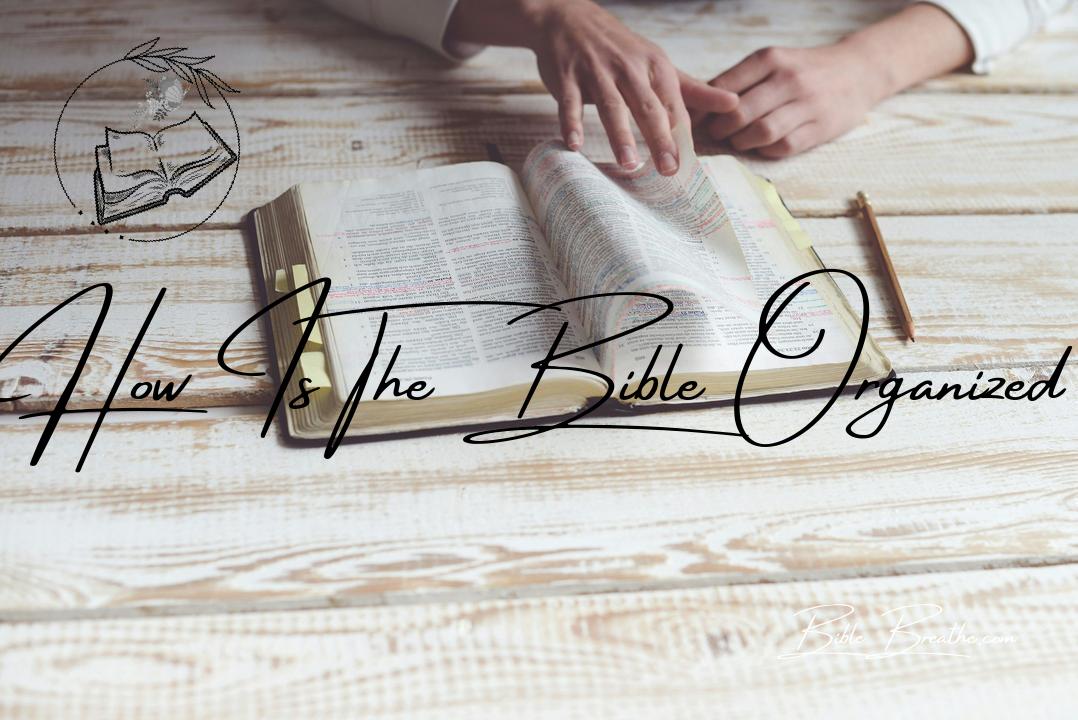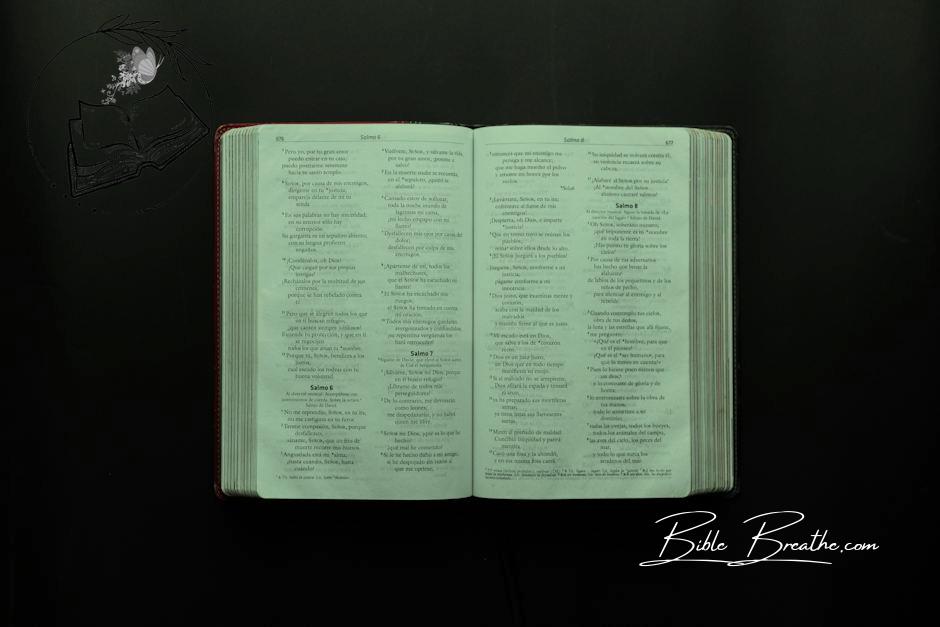How’s the Bible All Laid Out?
Now, picture this: You’ve got this incredible book, the Bible, in your hands, and it’s like a roadmap to your soul’s destination.
Understanding the Bible’s layout is like knowing your way through a grand adventure.
This book isn’t just one big story.
It’s more like an epic saga divided into the Old Testament and the New Testament, like two acts in a gripping drama.
Each act has its own cast of characters – from the fiery prophets to the law-giving crew in the Books of the Law.
And it’s not just about when things happened, but also what they mean.
The Bible is laid out to show you how everything connects, from the wild tales in Genesis to the heartwarming messages in the Epistles.
It’s like a giant puzzle, and we’re here to put the pieces together.
We’ll dig into the essence of Covenants, explore the languages of Hebrew and Greek, and understand the heartbeat of the Bible.
Whether you’re a seasoned believer or just starting the journey, this guide will help you navigate this amazing book.
Let’s dive in!
📖🌟
Key Takeaways
- Understanding the structure of the Bible is crucial for effective study and interpretation, aiding in a deeper comprehension of its themes, messages, and historical context.
- The Bible is organized into two main sections: the Old Testament and the New Testament. The Old Testament contains writings predating the life of Jesus Christ, including texts from Jewish scriptures, while the New Testament comprises writings focused on the life, teachings, death, and resurrection of Jesus and the early Christian church.
- The division into Old and New Testaments is significant as it represents a shift in God’s relationship with humanity. The Old Testament portrays the covenant between God and the people of Israel, while the New Testament introduces the covenant fulfilled through Jesus Christ, offering salvation to all humanity, expanding and deepening the understanding of God’s love and plan for redemption.“`
The Marvelous Bible Structure Unveiled
Photo modified by BibleBreathe.com. Original photo by Joël Super on Pexels
Hey there, my friends!
If you’ve ever wondered about the Bible’s organization, you’re in for a treat today.
It’s like exploring a massive library, but don’t worry, I’m your guide.
So, let’s dive into this incredible journey and uncover the beauty of how the Bible is put together.
The Old Testament: God’s Epic Tale with Israel
Think of the Old Testament as the foundation, the beginning of an epic saga.
It’s like Book 1 in a series, setting the stage for all the drama and redemption to come.
This part of the Bible tells us all about God’s relationship with the people of Israel.
You can imagine it as the backstory, the prologue to the grand narrative of the New Testament.
The Old Testament is chock-full of stories, laws, prophecies, and poetic verses that reveal God’s intricate connection with His chosen people.
It’s like a historical archive filled with divine moments, like when God created the universe:
In the beginning God created the heaven and the earth.” – Genesis 1:1 (KJV)
Now, this part includes Genesis, Exodus, and the Prophets, which are like the thrilling chapters of Israel’s journey, filled with struggles, triumphs, and unexpected turns.
The New Testament: The Jesus Chronicles Unveiled
Fast forward to the New Testament – it’s like the sequel in a blockbuster movie, but with a profound twist.
This section is all about Jesus Christ and the church He founded.
It’s where you’ll find the Gospels, which are like eyewitness accounts of Jesus’ life and teachings.
These are like the ultimate biography of the most influential figure in human history.
For God so loved the world, that he gave his only begotten Son, that whosoever believeth in him should not perish, but have everlasting life.” – John 3:16 (KJV)
The New Testament also holds the Epistles, which are like personal letters from early Christian leaders.
They’re packed with guidance and wisdom on living a righteous life and building a strong, supportive church community.
Unraveling the Bible’s Amazing Structure
To fully grasp the Bible’s awesomeness, you’ve got to get the structure.
It’s like having a treasure map that leads you to the most incredible gems of wisdom and stories.
The Old and New Testaments are divided into sections like the Books of the Law, Prophets, and more.
Each of these sections brings a unique flavor to the grand feast of spiritual nourishment within the Bible.
And in the upcoming sections, we’ll take a closer look at each of these divisions, unlocking the wonders of the Bible’s organization.
So, get ready, because we’re about to embark on a journey that will leave you in awe of the wisdom and love that the Bible holds.
Unpacking the Bible’s Organization: Time Frames and Main People
Photo modified by BibleBreathe.com. Original photo by Luis Quintero on Pexels
Hey, fam!
We’re about to dive deep into the Bible’s organization.
Buckle up, ’cause we’re gonna make this as clear as crystal, no church jargon, just straight talk.
Old and New Testaments: Time-Traveling Through the Word
You’ve got this epic book called the Bible, right?
Well, think of it like a two-part movie.
Yeah, like “The Godfather” Part I and Part II, but way more life-changing!
Old Testament: From Creation to ~400 BC
In the first part, the Old Testament, we’re going way back in time.
I’m talking creation, Adam and Eve, Noah’s ark – the whole shebang!
It’s like watching a prequel, laying the foundation.
We’re talking from the beginning of time to around 400 BC.
It’s like journeying through ancient history.
New Testament: The 1st Century (0-100 AD)
Now, imagine this is the sequel, the New Testament.
It’s the continuation of the story, and it’s all about the 1st century AD.
This is where Jesus enters the scene with a bang, surrounded by His squad.
It’s like transitioning from black and white to high-definition color – it’s that intense!
Cracking the Bible’s Masterplan
So, how does this Book of books organize all these life-changing stories?
Hold tight, ’cause it’s mind-blowing.
Books of the Law, Prophets, Gospels, and Epistles
In the Old Testament, you’ve got these different sections.
First up, the Books of the Law, think Genesis and Exodus – they’re like the setup.
Then there’s the Prophets, folks like Isaiah and Jeremiah who were dropping knowledge.
And you can’t forget the historical stuff in books like Joshua and Kings.
In the New Testament, it’s all about the Gospels (Matthew, Mark, Luke, and John) and the Epistles, which are like letters filled with wisdom.
Chronological Order and Testament Definition
This is where it gets cool.
The Bible isn’t just a random collection of stories.
It’s all in chronological order, like a grand timeline.
So, you can follow the story from beginning to end.
Oh, and when they say “testament,” think of it like a promise, a covenant.
The Old and New Testaments are like God’s two big promises to us.
Unraveling the Mystery
So, there you have it, fam.
The Bible’s organization is like a mind-blowing novel with a clear structure.
The Old Testament takes you way back in time, and the New Testament fast-forwards to Jesus and the 1st century AD.
And within these volumes, you’ll find these different sections that piece it all together, helping you unlock the treasure inside.
It’s like discovering a thrilling mystery, one chapter at a time.
“In the beginning God created the heaven and the earth.” – Genesis 1:1 (KJV)
Keep digging into the Word, and let it change your life, just like it’s changed mine.
Blessings, fam!
🙏
How the Bible Tells Its Epic Tale: The Old Testament’s Organization
Photo modified by BibleBreathe.com. Original photo by Luis Quintero on Pexels
Hey there, fam!
Today, we’re gonna dive into how the Bible lays out its story, specifically the Old Testament.
Think of it like a gripping movie with various acts.
You’ve got the Old Testament setting the stage for the New Testament’s grand finale.
Let’s break it down so you can grasp this like a pro.
The Books of the Law: Genesis to Deuteronomy
Picture this as the foundation, the very essence of God’s divine plan.
In Genesis, you’re in for a mind-blowing creation story.
Exodus takes you on a wild ride as the Israelites escape Egypt.
Leviticus gets all detailed about worship and rituals, like the rulebook for a game.
Numbers feels a bit like a spiritual headcount, and Deuteronomy is like Moses dropping some wisdom bombs before the Israelites move into the Promised Land.
These five books are what folks call the Pentateuch or the Torah.
They’re the building blocks of the whole story.
History: Joshua to Esther
Now, this part is like reading a thrilling historical novel.
Joshua leads the Israelites into the Promised Land, and then you’ve got the time of the Judges trying to keep everyone in line.
Ruth is a tale of loyalty and love, like something out of a movie.
Samuel kicks off the era of kings with Saul and the beloved David.
Then, you’ve got Kings and Chronicles, which are basically epic dramas with a lot of twists and turns.
And don’t forget the captivating stories of some amazing women, like Esther.
It’s like a divine history lesson that’ll keep you glued to the pages.
Poetry: Job to Song of Songs
Now, it’s time to switch gears and dive into some heart-touching poetry.
These books are like the lyrics to a beautiful, divine song.
Job grapples with life’s toughest questions.
Psalms are like a collection of heartfelt prayers, praises, and moments of sadness – like God’s playlist.
Proverbs drops some serious wisdom for daily life, like having your own life coach.
Ecclesiastes makes you ponder the meaning of life itself, and Song of Songs is a passionate celebration of love.
It’s poetry that speaks right to the heart.
Prophets: Isaiah to Malachi
These guys are like messengers from the big man upstairs, reminding the people to stay on the right path.
Isaiah is all about hope and redemption.
Jeremiah is like the guy who can’t help but shed tears over a stubborn nation.
Ezekiel gives you these wild visions, and Daniel tells us what it’s like to have faith in a foreign land.
Then, you’ve got the Minor Prophets, like a chorus of voices offering warnings and promises.
These books are like God’s personal messages to His people.
So, that’s how the Old Testament is structured – a masterpiece of history, law, poetry, and prophecy.
Each part is like a puzzle piece, unique in its own way, but when you put them together, they unveil the magnificent story of God’s love and His plan for us.
This structure is like a treasure chest, waiting for you to explore its wisdom.
Get ready to dive in, fam!
🙌📖
The Divine Symphony: How the Bible Dances to its Own Beat
Photo modified by BibleBreathe.com. Original photo by Pixabay on Pexels
Hey there, fam!
Ever wondered how this Bible we hold so dear is all laid out?
It’s not random, not by a long shot.
Just like a well-crafted playlist or a perfectly cooked recipe, the Bible’s organization is nothing short of divine genius.
So, let’s groove on down and break it down – the New Testament, and how it’s all set up.
The Groovy Gospels: Matthew to John
Now, imagine the New Testament is like an epic concert, and the Gospels are the opening act.
It’s a bit like different musicians playing different tunes, but they’re all in sync.
Matthew, Mark, Luke, and John each bring their unique flavor to the stage.
They’re here to introduce you to Jesus, to give you a front-row seat to His teachings, His miracles, and the way He rocked the world.
It’s like you’re walking alongside Him, feeling the sand under your feet and hearing the crowd’s cheers.
Unveiling the Epic Saga: The Book of Acts
After that opening act, we move to a different scene.
Acts is like a history documentary.
It’s the backstage pass to the early days of the Church.
It shows us how the whole Christian movement started, and trust me, it’s as epic as a blockbuster movie.
If the Gospels are the first song, Acts is the thrilling setup for the rest of the New Testament.
Heartfelt Letters: Mostly by Paul, Several by Others
Now, picture the New Testament as a care package sent by your closest friends.
Inside, you’ve got letters, lots of them.
Most of these are from a guy named Paul, but there are heartfelt notes from other apostles like Peter, James, and John.
These letters are like wise advice from a mentor, giving you guidance, encouragement, and life hacks to navigate the twists and turns.
Prophetic Fireworks: The Book of Revelation
Finally, we come to the grand finale, like the crescendo of a symphony or the fireworks at a festival.
Revelation is all about visions and prophecies, like a sneak peek into the future and the ultimate showdown between good and evil.
It’s a reminder that the Bible’s story doesn’t stop; it keeps going into eternity.
So, when you open the New Testament, remember this ain’t just a haphazard mix of stories.
It’s a masterpiece, a divine plan, like a playlist that hits all the right notes or a recipe that brings the flavors together perfectly.
It’s a gift, a guide, and a journey through God’s love and purpose.
“Your word is a lamp to my feet and a light to my path.” – Psalm 119:105 (KJV). It’s the GPS for your life’s journey, guiding your every step. So, let’s keep walking this path together!
Unveiling God’s Timeline: The Epic Journey of Bible Organization
Photo modified by BibleBreathe.com. Original photo by John-Mark Smith on Pexels
Ever felt like you’re diving into a jigsaw puzzle without a box to guide you?
That’s how it can be stepping into the Bible, trying to figure out its timeline without a clear roadmap.
Let’s break down how this incredible book unfolds in terms of time.
Not Your Average Timeline
You know, the Bible isn’t laid out like a history book, one event after another in a straight line.
It’s more like a masterpiece painting—God’s masterpiece!
Each stroke of the brush reveals something unique about His plan.
The Grand Flow
In this magnificent masterpiece, there’s a general flow of events, but it’s not like a neat, straight line.
The Old Testament gives us the backstory—the beginning of the story from the creation of the world to the prophets talking about the coming Messiah.
Then, the New Testament bursts onto the scene, introducing us to Jesus Christ and the early Christian church.
Think of the Old Testament like setting the stage, painting the background, while the New Testament brings the main characters into the spotlight.
It’s like a dramatic play, with each act building on the one before.
The Old Testament lays the foundation, the background music playing softly, and then the New Testament cranks up the volume, putting the spotlight on the hero, Jesus, and the action of the early church.
It’s a story that’s more than dates and events—it’s a grand narrative, and we’re part of it!
As we delve deeper into this divine composition, we’ll peel back layers, revealing the incredible beauty of God’s plan, with every twist and turn of the Biblical narrative.
For everything there is a season, a time for every matter under heaven.” – Ecclesiastes 3:1 (KJV)
Unveiling God’s Grand Blueprint: How the Bible is Laid Out
Photo modified by BibleBreathe.com. Original photo by Ravi Kant on Pexels
Hey fam, let’s break down this treasure trove we call the Bible—God’s epic narrative, a collection of heaven-sent letters penned just for us.
Grasping the Heart of “Testament”
When we say “Testament,” think of a rock-solid promise, a divine handshake.
The Old Testament?
It’s like the foundation of a skyscraper, where God unveiled His plan, the ancient prophecies, laws, and stories—a roadmap leading to the ultimate revelation.
It’s like God laying out the draft of His great design.
Now, shift to the New Testament.
Imagine it’s the grand opening, the completion of the masterpiece.
Jesus Christ, our Savior, steps onto the scene.
It’s the upgrade, the refined version, a seal on the deal, bringing to life what was foretold.
The Old Testament was like a preview, and the New Testament?
That’s the main event, the full movie, where Jesus takes center stage.
Unveiling the Unique Essence of Old and New
In the Old Testament, we get a glimpse into God’s relationship with His people, His journey with them through thick and thin.
It’s like the backstory, the roots of a tree, grounding us in the faith’s history.
On the other hand, the New Testament?
It’s the pinnacle, the mountaintop experience.
It’s where we see Jesus, His teachings, His sacrifice—it’s the game-changer.
So, are you ready to dive into this divine storyline?
From the Old to the New, it’s God’s love letter, an invitation to a life-changing encounter.
For there is one God, and one mediator between God and men, the man Christ Jesus.” – 1 Timothy 2:5 (KJV)
Frequently Asked Questions (FAQs) About How Is The Bible Organized
What is the best order to read the Bible for beginners?
For beginners, it’s often recommended to start with the New Testament, particularly the Gospels (Matthew, Mark, Luke, and John), to gain an understanding of Jesus and his teachings.
Then, move to the Old Testament, starting with Genesis, and progress from there.
Why are there four accounts of Jesus’ life?
The four accounts of Jesus’ life are found in the Gospels of Matthew, Mark, Luke, and John.
Each Gospel provides a unique perspective on Jesus’ life and teachings, tailored to the needs of different audiences.
They offer complementary viewpoints to present a fuller understanding of his ministry, aiming to reach various communities and convey different aspects of his message.
How is the Old Testament different from the New Testament?
The Old Testament comprises ancient Hebrew scriptures focusing on God’s covenant with Israel, historical accounts, laws, and prophecies.
The New Testament centers on the life, teachings, death, and resurrection of Jesus Christ and the establishment of Christianity, offering a new covenant, grace, and salvation.







